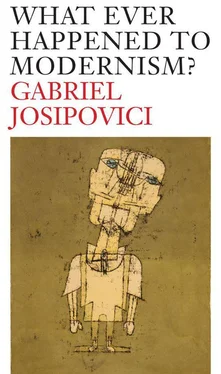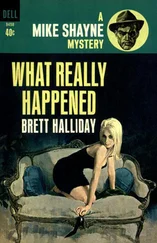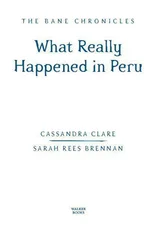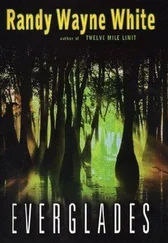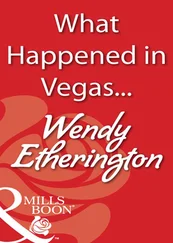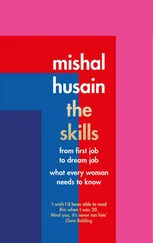The opposite but equally misleading view is the one taken by certain artists in particular, that there is nothing of any interest in the arts before Duchamp. Thus the American artist Joseph Kossuth claims that ‘As far as art is concerned, Van Gogh's paintings aren't worth any more than his palette is’, and that ‘all art (after Duchamp) is conceptual (in nature) because art only exists conceptually’. Parallel to this is the view of the critic who is only interested in the art of the past to the degree that in it are to be found hints of the Modernism to come, a view that even so intelligent a critic as Barthes at times comes dangerously close to espousing.
Despite such extreme claims as those of Kossuth, the fact remains that it is in the domain of art rather than literature and music that the most interesting and sophisticated explorations of Modernism are to be found, as my quotes from Joseph Koerner, Rosalind Krauss and Thierry de Duve in the course of this book demonstrate. I think this has to do with the fact that literature is too embroiled with the world while music can only properly be discussed by those with the technical know-how; painting, on the other hand, is ‘purer’ than literature, so that one can see more clearly what is at stake in painterly choices, while being, in principle at any rate, accessible for anyone to comment on.
The most powerful exponent of the purist view of Modernism was the New York art critic Clement Greenberg in the middle years of the twentieth century. ‘I identify Modernism’, he wrote,
with the intensification, almost the exacerbation, of this self-critical tendency, that began with … Kant … The essence of Modernism lies, as I see it, in the use of the characteristic methods of the discipline to criticize the discipline itself — not in order to subvert it, but to entrench it more firmly in its area of competence.
Thus art is seen as searching for its essence, for that which is only art and nothing else — for all else is frippery, ‘mere’ convention. In this story all art is seen as moving towards abstraction, and then finally to Abstract Expressionism, New York style, as inevitably as history moves towards the dictatorship of the proletariat. The trouble with this is that it is deeply puritanical, and behaves towards the past rather as Mary Douglas accused Protestantism of behaving towards sacred history: it certainly has a vision of history, but it is a thin and selective one. Here, for example, is Greenberg on Mondrian: ‘His pictures … are no longer windows in the wall but islands radiating clarity, harmony and grandeur — passion mastered and cooled, a difficult struggle resolved, unity imposed on diversity. Space outside them is transformed by their presence.’ This says something about Mondrian and helps us look at his pictures. It does so largely by means of a stark contrast between his pictures and all those that preceded them: they were windows let into the wall; his are islands of purity placed on the wall. That, in a way, is beautifully put, and illuminating (it occurs in a moving obituary of the painter). But after a while we start to ask: Are all pictures before Mondrian ‘windows’? And, even if they are, are not the differences between them, between the windows of Leonardo and Rembrandt, say, or those of Vermeer and Cézanne, more important than the fact that they are all ‘windows’, that all of them ask us to look at some form of representation of the world isolated within the frame? Perhaps the answer is no, but Greenberg would have to do a lot more work to persuade us.
Thierry de Duve's book on Duchamp and Modernism, from which I have had occasion to quote, is similarly absolute, though more sophisticated. He brings out well how Duchamp's art as it evolved in the second decade of the twentieth century was aimed at subverting the pretensions of the pioneers of abstraction, especially Kandinsky, as much as the prejudices of the traditionalists. He quotes a lyrical passage from Kandinsky's Reminiscences , which ends: ‘And then comes the imperious brush, conquering [the canvas] gradually first here, then there, employing all its native energy, like a European colonist who with axe, spade, hammer, saw, penetrates the virgin jungle where no human foot has trod, bending it to conform to his will.’ And he comments:
The text presents the tube of paint, then the palette, next the virgin canvas, and finally the brush, not as the tools of the painter.. but as metonyms of potential yet accomplished paintings. But the tube of paint, the palette, the canvas and the brush are also the protagonists of an erotic saga which the rest of the text then unfurls, with dubious lyricism infused with machismo and colonialism.
De Duve rightly contrasts this with Duchamp's sending up of the colonialist enterprise in scattered remarks throughout his life, which he compares to that of Raymond Roussel in Impressions d'Afrique , but which could also be compared to Apollinaire's magnificent Les Mamelles de Tirésias . ‘For Kandinsky's abstract expressionism, for Malevich's suprematism, for Mondrian's neoplasticism and for all the purisms that sprang between 1912 and 1914 from the idea of pure colour,’ he goes on, ‘Duchamp substituted eroticism, which, as he very seriously explained to Pierre Cabanne, he wanted to turn into a new artistic “ism”.’ There is, however, nothing very macho about Duchamp's eroticism, as we have seen, since the poor Bachelors never get to the Bride and have to be satisfied with what Duchamp, commenting on his chocolate-grinding machine, termed ‘olfactory masturbation’.
De Duve uses Duchamp to throw doubt upon the enterprise of Kandinsky, Malevich and Mondrian, but also upon that of a later idealist like Beuys, whom he rightly sees as dreaming, like Novalis, of an ideal world replacing the real one. But of course he also uses Duchamp to throw doubt upon the whole notion of a tradition which, unaware that its foundations have been sapped, goes on acting as if it were imbued with authority, the authority to say what art is good and what art is bad; the authority to award prizes and to decide what art will be in and what out; the authority, finally, to decide what is art and what is not (is a bicycle wheel art? an enamel urinal?). Yet de Duve is no Duchamp. He does not quite know when to keep his mouth shut or how to speak only in riddles. With his back to the wall, so to speak, he is as prescriptive as Greenberg: ‘When push comes to shove’, he admits towards the end of his long book, ‘Rodchenko is an artist and Bonnard is not.’
A painter friend of mine tells how, when he was a student at the Slade in the mid-1960s, Greenberg's was the view of art history with which they were confronted: Modernism went from Manet to Pollock via Cézanne, Cubism and abstraction. This explained everything that needed explaining in the eyes of the tutors, but it left no room for twentieth-century artists who interested my friend, such as Bonnard, Balthus, Beckman and Bacon, to stick only to the Bs. A decade or two later the scene was so dominated by Duchamp that the story would be very different: it would go from Seurat to Duchamp to Pop Art to all the varieties of conceptual art now being practised. There would still be no room for the four Bs. The question is: how to tell a story compelling enough yet supple enough to contain both Mondrian and Bonnard, both Schoenberg and Satie, both Kafka and Queneau?
One recent critic who has managed to do just that, it seems to me, is T.J. Clark in his magnificent Farewell to an Idea: Episodes from a History of Modernism . Clark rightly recognises that modernity is bound up with disenchantment, which is linked to secularism. He quotes Hegel in the Aesthetics : ‘Art, considered in light of its highest vocation, is and remains for us a thing of the past.’ This does not of course mean that art ceases after 1820, only that its ability effortlessly to articulate the world has gone. Viewing Modernism through the prism of Hegel's chapter on the Unhappy Consciousness in the Phenomenology , he argues that for art to remain meaningful in these changed circumstances it has to accept what he calls contingency, and I have called arbitrariness. Art's being able to continue, he argues, has depended on its being able to make Hegel's dictum in the Asesthetics ‘specific and punctual’. ‘That is to say, on fixing the moment of art's last flowering at some point in the comparatively recent past, and discovering that enough remains from this finale for a work of ironic or melancholy or decadent continuation to seem possible nonetheless.’ This he calls, invoking Beckett, the ‘can't go on, will go on’ syndrome. And he understands that once the Hegelian view is accepted technique will always be seen as ‘a kind of shame’, while at the same time artists, desperate for something stable beneath their feet, will tend, like Flaubert, to fetishize the notion of the sheer hard practical and technical work involved in making art.
Читать дальше
